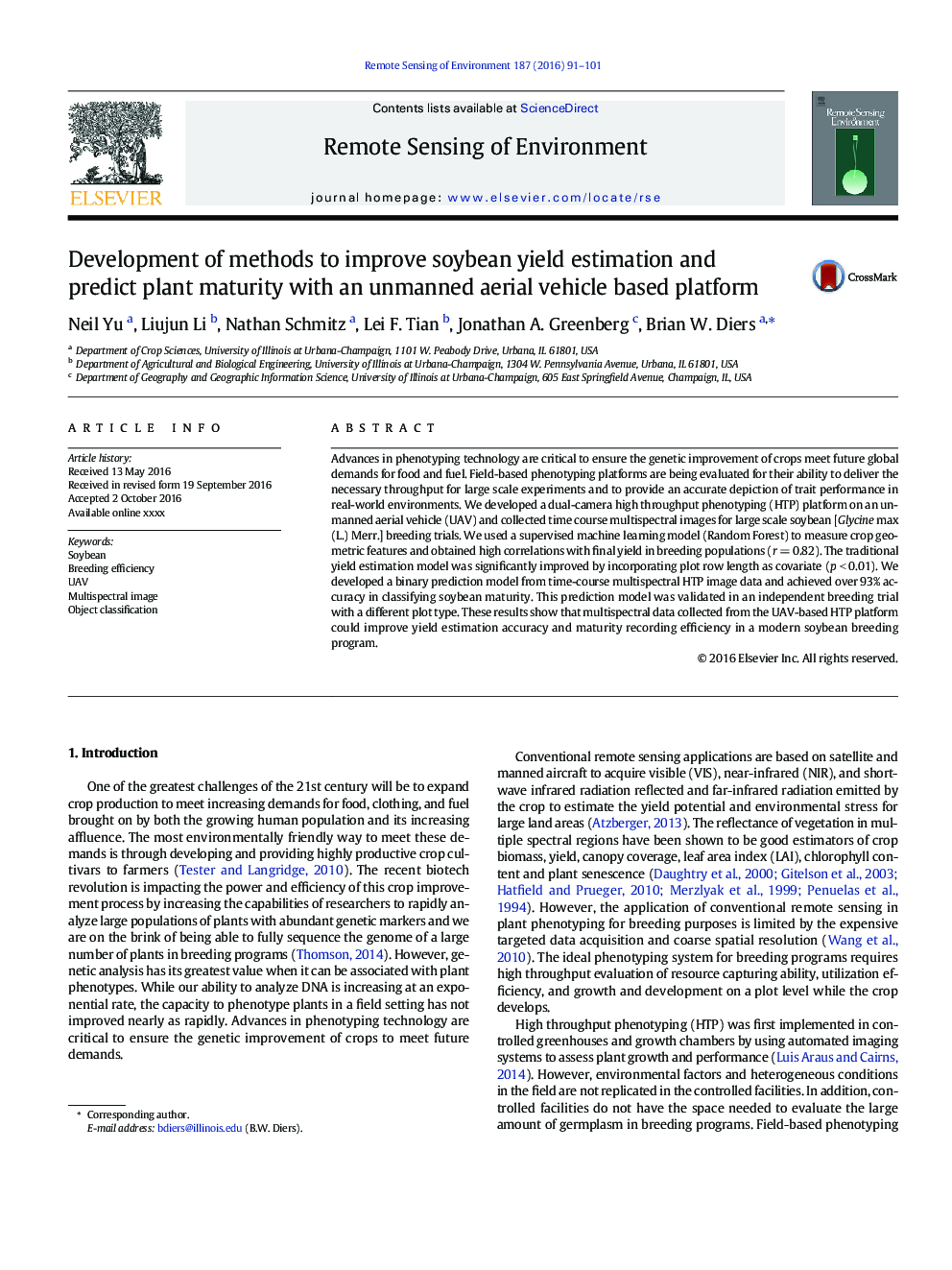| Article ID | Journal | Published Year | Pages | File Type |
|---|---|---|---|---|
| 6344818 | Remote Sensing of Environment | 2016 | 11 Pages |
Abstract
Advances in phenotyping technology are critical to ensure the genetic improvement of crops meet future global demands for food and fuel. Field-based phenotyping platforms are being evaluated for their ability to deliver the necessary throughput for large scale experiments and to provide an accurate depiction of trait performance in real-world environments. We developed a dual-camera high throughput phenotyping (HTP) platform on an unmanned aerial vehicle (UAV) and collected time course multispectral images for large scale soybean [Glycine max (L.) Merr.] breeding trials. We used a supervised machine learning model (Random Forest) to measure crop geometric features and obtained high correlations with final yield in breeding populations (r = 0.82). The traditional yield estimation model was significantly improved by incorporating plot row length as covariate (p < 0.01). We developed a binary prediction model from time-course multispectral HTP image data and achieved over 93% accuracy in classifying soybean maturity. This prediction model was validated in an independent breeding trial with a different plot type. These results show that multispectral data collected from the UAV-based HTP platform could improve yield estimation accuracy and maturity recording efficiency in a modern soybean breeding program.
Related Topics
Physical Sciences and Engineering
Earth and Planetary Sciences
Computers in Earth Sciences
Authors
Neil Yu, Liujun Li, Nathan Schmitz, Lei F. Tian, Jonathan A. Greenberg, Brian W. Diers,
